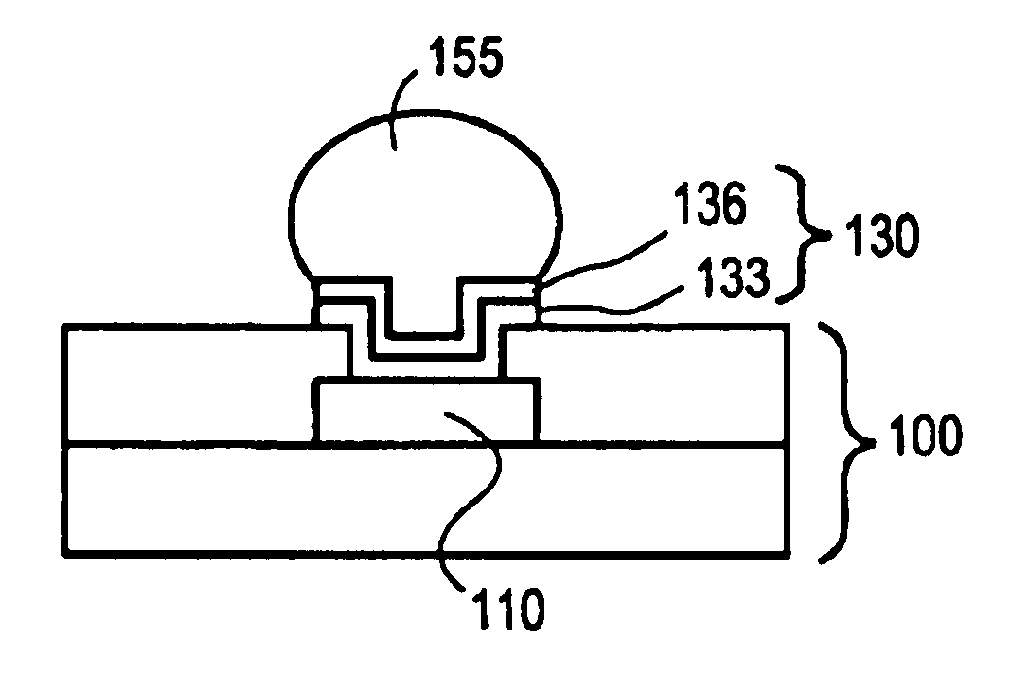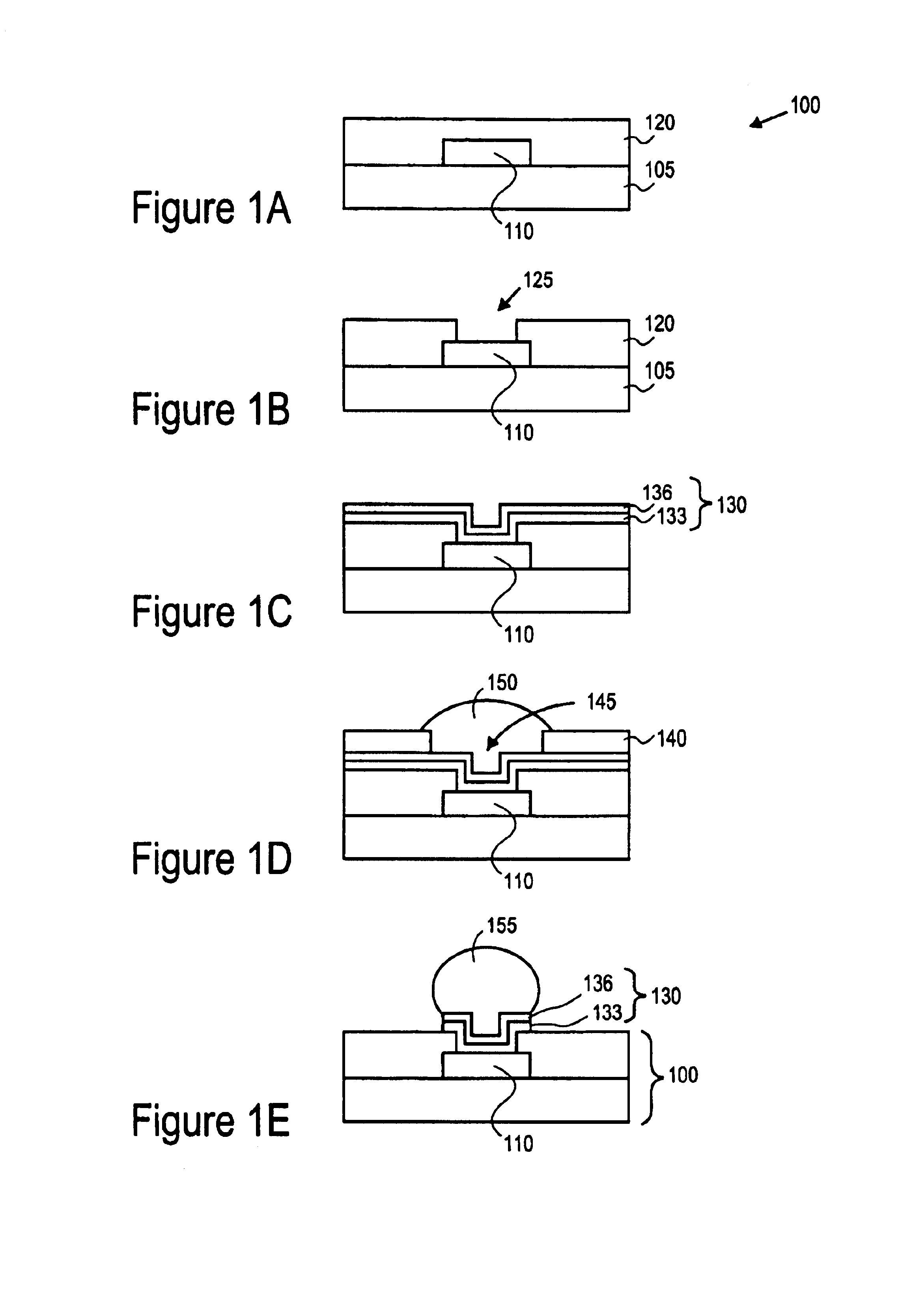Under bump metallurgy for lead-tin bump over copper pad
a technology of leadtin and bumping, which is applied in the direction of manufacturing tools, soldering equipment, semiconductor/solid-state device details, etc., can solve the problems of affecting the performance and reliability of the chip-to-package interconnection, bumping significantly increasing the density of i/o connections, and bumping reducing the footprint of the packag
- Summary
- Abstract
- Description
- Claims
- Application Information
AI Technical Summary
Benefits of technology
Problems solved by technology
Method used
Image
Examples
Embodiment Construction
In the following description, numerous particular details, such as specific materials, dimensions, and processes, are set forth in order to provide a thorough understanding of the present invention. However, one skilled in the art will realize that the invention may be practiced without these particular details. In other instances, well-known semiconductor equipment and processes have not been described in particular detail so as to avoid obscuring the present invention.
The present invention includes a method of forming a more reliable under bump metallurgy (UBM) and a UBM that is more reliable. The method of the present invention suppresses the diffusion of Tin from a solder bump to an underlying Copper bond pad, minimizes the formation of a Copper-Tin (Cu:Sn) intermetallic compound, and prevents shorting of interconnects. The UBM of the present invention may include Aluminum with an alloying element such as Magnesium.
An embodiment of a method of the present invention is shown in F...
PUM
| Property | Measurement | Unit |
|---|---|---|
| thickness | aaaaa | aaaaa |
| thickness | aaaaa | aaaaa |
| thickness | aaaaa | aaaaa |
Abstract
Description
Claims
Application Information
 Login to View More
Login to View More - R&D
- Intellectual Property
- Life Sciences
- Materials
- Tech Scout
- Unparalleled Data Quality
- Higher Quality Content
- 60% Fewer Hallucinations
Browse by: Latest US Patents, China's latest patents, Technical Efficacy Thesaurus, Application Domain, Technology Topic, Popular Technical Reports.
© 2025 PatSnap. All rights reserved.Legal|Privacy policy|Modern Slavery Act Transparency Statement|Sitemap|About US| Contact US: help@patsnap.com


